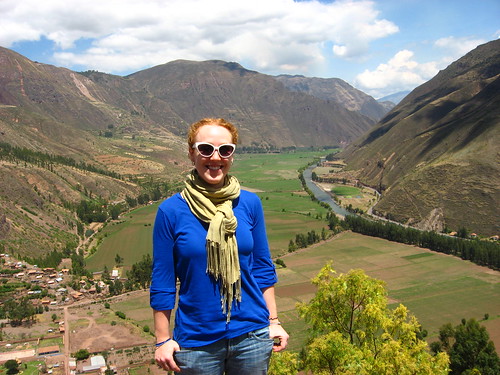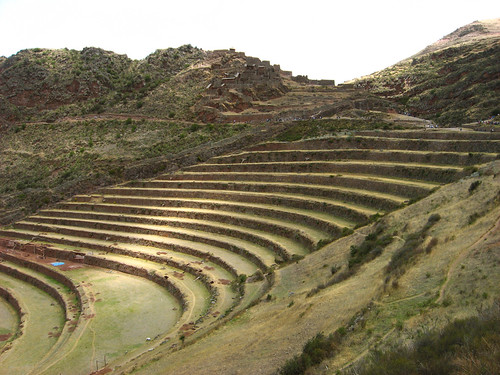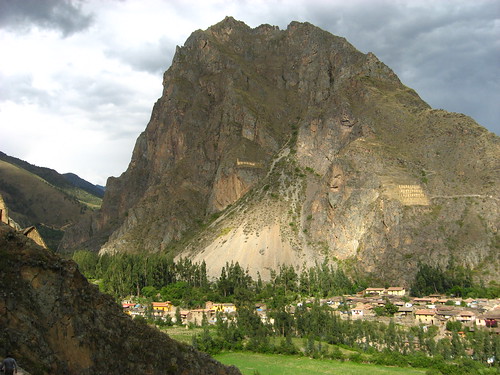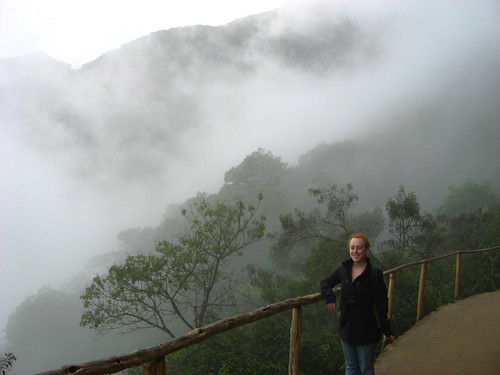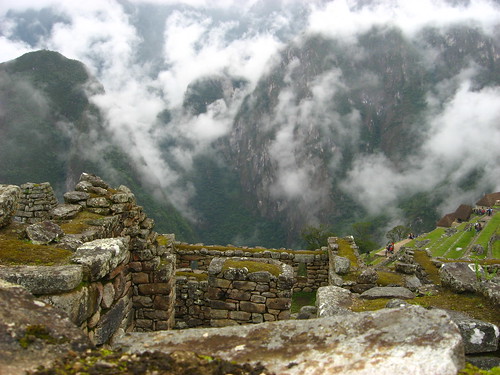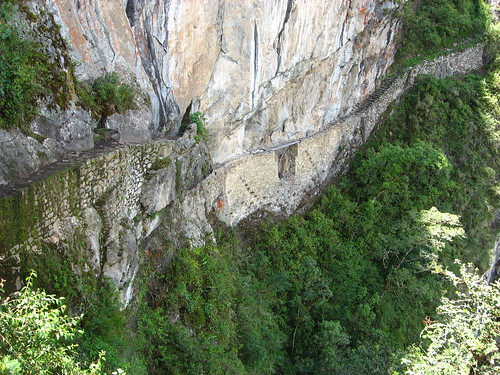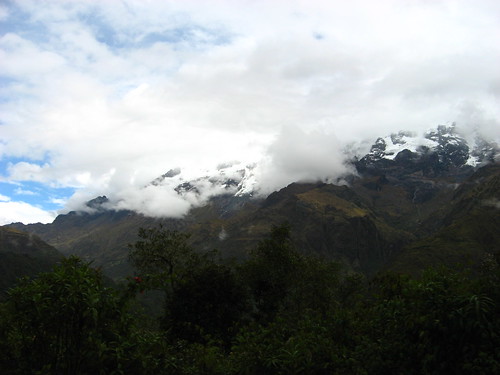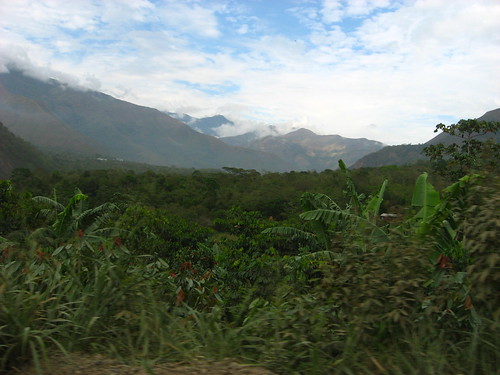
I headed out to Chinchero Saturday morning to dye a hella lotta yarn with Klara (the CTTC's other volunteer, who is headed for the Caribbean Tuesday). I've been wanting to be able to do some dyeing on my own and she was in need of more colors to take with her, so we asked Nilda really nicely if we could get some dyestuffs and mordants and she was like "of course" and then didn't charge us anything for it because the quantities we wanted didn't even put a dent in the quantities by which they buy the dyestuffs (she said that most of the dried dyestuffs cost about S/. 10 (~$4) a kilo and we only wanted a few ounces of each). So Klara and I each bought a kilo of llama/alpaca mix yarn and broke it into skeins and had something like 18 skeins to dye between us. The dyes we were able to find in the dye shed were: Q'uolle (yellow giving flower), Palo-Palo (Peach giving twiggy vine thing), Chilq'ua (green giving fresh leaf), and Kinsa Q'uchu (teal giving fungus-plant combo dye). We dyed everything and then began mixing (we had about 2 skeins each for each vat-- one to leave that color and one to overdye with something else). We ended up adding a pinch of Cochineal + 1/4c Citric Acid to the Palo-Palo exhaust bath to brighten up the mixed colors.
My dye mix went something like this:
Q'uolle-- 1:1 ratio dyestuff to fiber + 1c Alum. 1 pale yellow & 1 pale yellow top-dyed with Palo-Palo/Cochineal for burnt orange
Palo-Palo-- 1.5:1 ratio dyestuff to fiber + 1c Alum + 1/4c Vinegar. Skein Count: 1 dark peach & 1 dark peach top-dyed with Q'uolle for golden yellow
Kinsa Q'uchu-- 1.5:1 ratio dyestuff to fiber + 1/4c Citric Acid. Skein Count: 1 dark teal & 1 light teal & 1 light teal top-dyed with Palo-Palo/Cochineal for a dark brick red & 1 medium teal top-dyed Q'uolle for a bright green
Chilq'ua: 1:1 ratio dyestuff to fiber + 1c Alum + 1/4c Cupric Sulfate. Both skeins came out a pale moss, which was too pale for what we wanted (NOTE: Chilq'ua needs a 2:1 ratio and not the 1:1 we used over the weekend). So, I over-dyed one kinsa q'uchu and then q'uolle & I over-dyed the other with the palo-palo/cochineal for a bright red.
Our Colors

I love my colors!! They're really different than the colors the weavers get when they do their natural dyes. (The weavers spent the whole weekend recommending we do this or that, to make things more saturated, to make this more orange, ect.) Klara and I didn't want the highly saturated colors they get (we can get those colors during group dyes, or by buying them from the weavers). Klara kept saying that our colors "looked naturally dyed" however this is a phrase I've never understood. I can get all the colors the weavers get with MX dyes, and I can get all the colors Klara and I got with MX dyes, and until someone is told "it's naturally dyed" they don't know the difference. I think it's just a left over sentiment from the 70's and it should just disappear....
And some weaving pics-- this is Klara weaving and demonstrating pick-up weaving designs.




